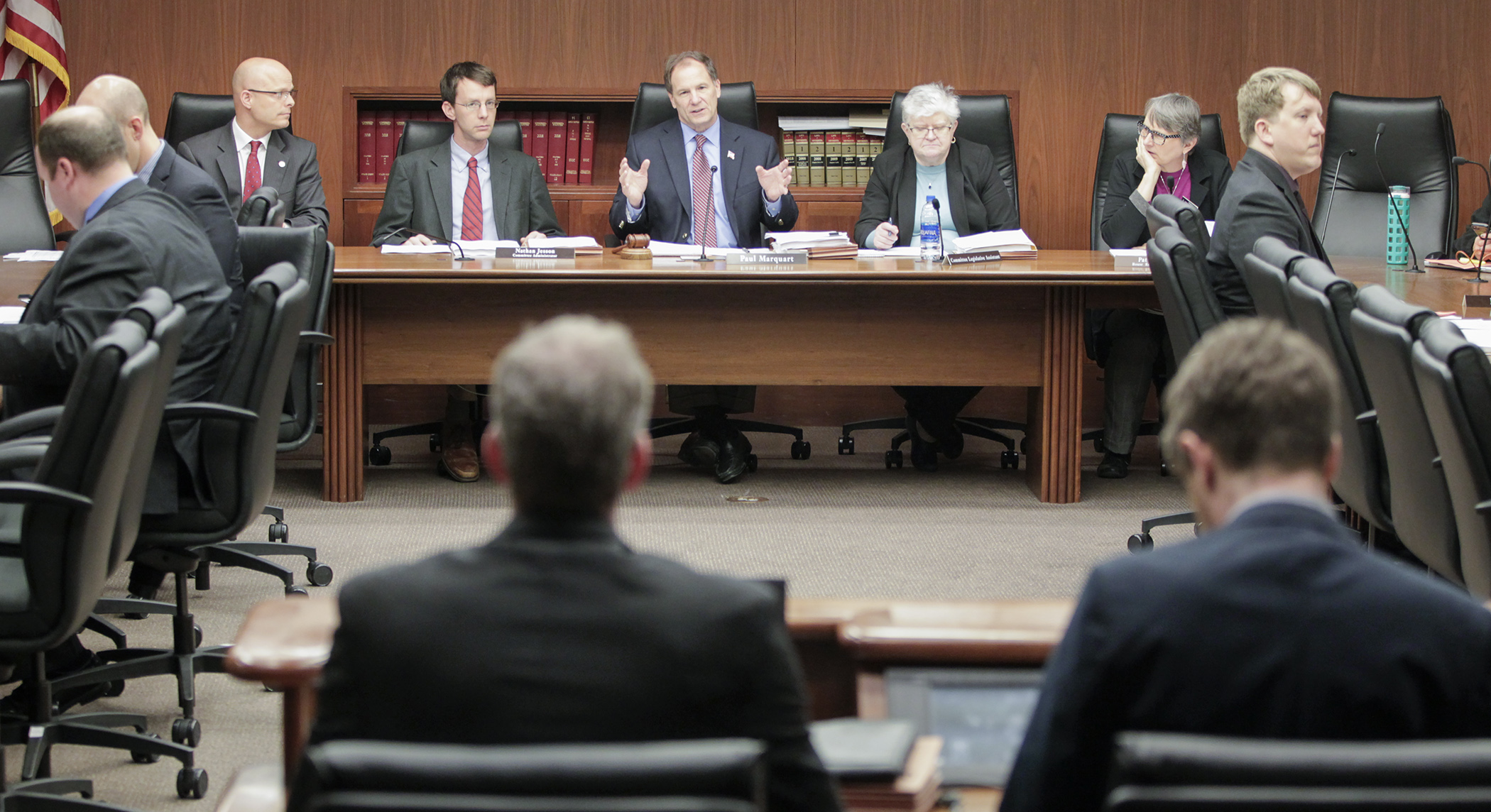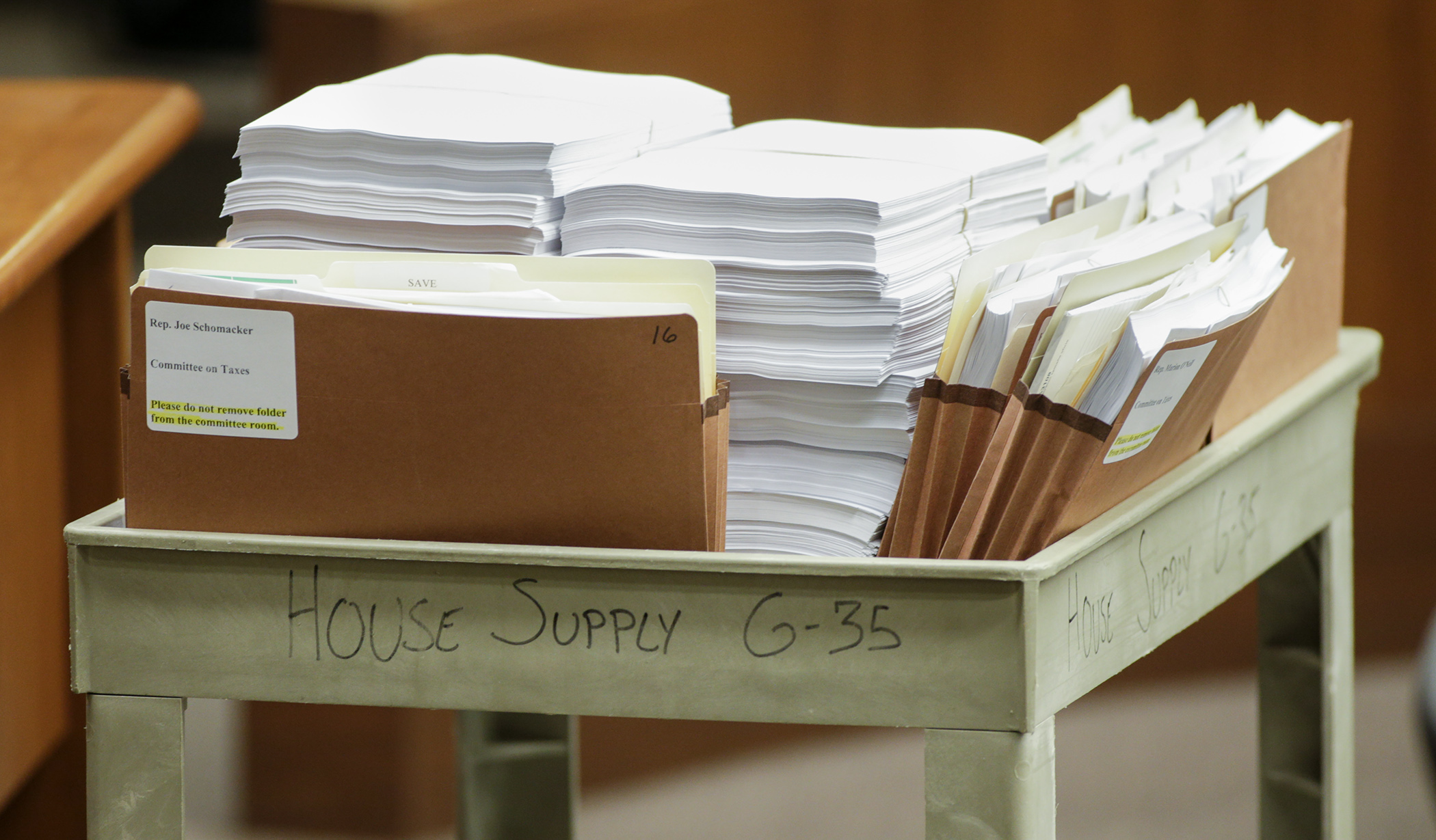Going up or down? Your taxes will likely change under conference committee compromise

It all came down to taxes. On almost every initiative introduced at this year’s legislative session, the subject eventually turned to how to pay for it.
On the DFL side, the focus tended to be on making investments they claimed would end up saving money (and improving quality of life) in the long run. Meanwhile, Republicans in both chambers made clear that holding the line on taxes was their top priority.
So how did these differing philosophies of taxation find common ground in the omnibus tax agreement that was unveiled to the House Taxes Committee Thursday and is expected to be introduced at the special session? Well, both the House and Senate got some of what they wanted in the compromise. And it mostly accomplishes the stated goal (both last year and this) of bringing Minnesota tax policy into conformity with the federal Tax Cuts and Jobs Act that went into effect in late 2017.
[MORE: View the spreadsheet]
Here are some changes that could make a difference.
For your average taxpayer
The first change you would notice when doing your taxes next year is the starting point for calculating your taxes would change from federal taxable income to federal adjusted gross income.
Then comes the big difference: Increasing the standard deduction to federal levels (basically doubling it). It’s estimated that 92.5 percent of Minnesota filers would take the standard deduction, thus simplifying the filing process.
 A cart full of documents awaits distribution at the House Taxes Committee’s informational hearing on the omnibus tax bill agreement May 23. Photo by Paul Battaglia
A cart full of documents awaits distribution at the House Taxes Committee’s informational hearing on the omnibus tax bill agreement May 23. Photo by Paul BattagliaThe agreement would reduce the second tier income tax rate from 7.05 percent to 6.8 percent, making it the first income tax rate cut in the state since 2000. The second tier refers to incomes of individuals making between $26,521 and $87,110, and married couples filing jointly who make between $38,771 and $154,020. It would also reduce the starting point for the fourth tier income tax bracket by $2,000, $4,000 for couples.
There would also be an increase in the Working Family Credit if you have either no children or three or more, and increase the Social Security subtraction. With credits, those making $32,900 or less would not pay income taxes.
Where Minnesota law wouldn’t conform is in some itemized deductions particular to the state, including for some medical expenses, taxes paid, unreimbursed employee expenses, casualty and theft losses, and higher charitable contributions. Gone would be the deduction for home equity interest.
For health care providers
The 2 percent health care provider tax was set to expire at the end of this year, but the bill would renew it indefinitely at a lower rate of 1.8 percent. It funds the MinnesotaCare medical assistance program for those with lower incomes.
For businesses
The statewide commercial-industrial property tax levy would be reduced. And Minnesota would conform to federal law when it comes to expensing and bonus depreciation, limits on losses one can claim, and deductions on interest, business expenses and “carryovers.” More businesses would be allowed to use cash basis accounting.
As a result of the U.S. Supreme Court’s Wayfair decision, changes would be made to the way sales taxes are collected for remote sellers and marketplace providers. And, if you’re in the medical cannabis business, state law would allow you to subtract business expenses like most businesses do.
For municipalities
The big deal is that funding would increase for Local Government Aid and County Program Aid. The agreement would also increase the school building bond agricultural credit and establish an annual appropriation for border city enterprise zones. There would also be sales tax construction exemptions for many local government capital projects.
If you passed a local option sales, lodging, food or beverage tax in a referendum recently, it probably was approved by the Legislature this session. Exceptions were few. And tax increment financing authority would be provided for Alexandria, Anoka, Bloomington, Champlin, Duluth, Edina, Hopkins, Minneapolis and Roseville.
And, if you live in Duluth, the agreement authorizes bonding for that big hospital project being planned.
For investors
In tax year 2021, a new “angel credit” would take effect for those investing in startups, and a mutual fund manager apportionment would be modified and bring in an estimated $15.3 million in the 2020-21 biennium.
So how does this affect the state’s bottom line?
The final agreement between Gov. Tim Walz and legislative leaders mentioned a “zero target” for fiscal years 2020 and 2021. What that means is the state would attempt to have no additions to its budget reserve, nor any shortfalls, instead shooting for having revenues and expenditures line up as closely as possible. And they’re pretty close with this bill, with a balance of $61,000 projected for Fiscal Years 2020-21.
Related Articles
Search Session Daily
Advanced Search OptionsPriority Dailies
Ways and Means Committee OKs proposed $512 million supplemental budget on party-line vote
By Mike Cook Meeting more needs or fiscal irresponsibility is one way to sum up the differences among the two parties on a supplemental spending package a year after a $72 billion state budg...
Meeting more needs or fiscal irresponsibility is one way to sum up the differences among the two parties on a supplemental spending package a year after a $72 billion state budg...
Minnesota’s projected budget surplus balloons to $3.7 billion, but fiscal pressure still looms
By Rob Hubbard Just as Minnesota has experienced a warmer winter than usual, so has the state’s budget outlook warmed over the past few months.
On Thursday, Minnesota Management and Budget...
Just as Minnesota has experienced a warmer winter than usual, so has the state’s budget outlook warmed over the past few months.
On Thursday, Minnesota Management and Budget...